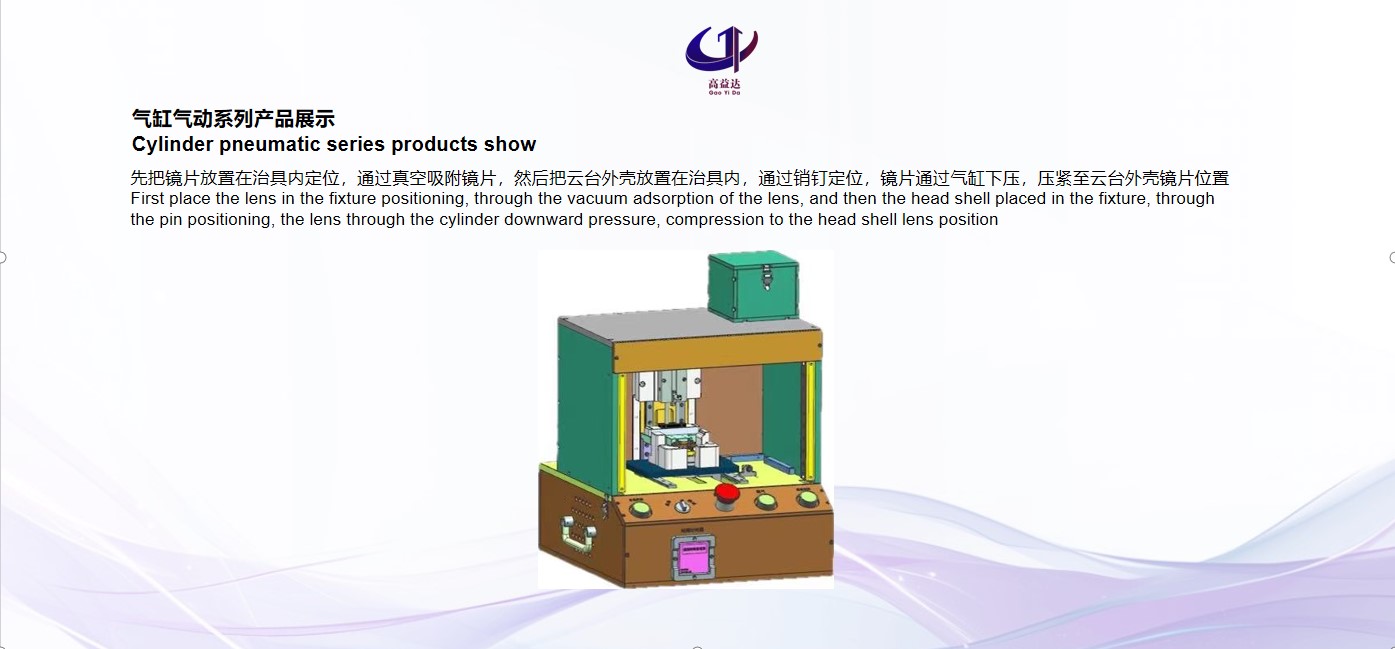气缸气动系列产品展示Cylinder pneumatic series products show

先把镜片放置在治具内定位,通过真空吸附镜片,然后把云台外壳放置在治具内,通过销钉定位,镜片通过气缸下压,压紧至云台外壳镜片位置 First place the lens in the fixture positioning, through the vacuum adsorption of the lens, and then the head shell placed in the fixture, through the pin positioning, the lens through the cylinder downward pressure, compression to the head shell lens position


